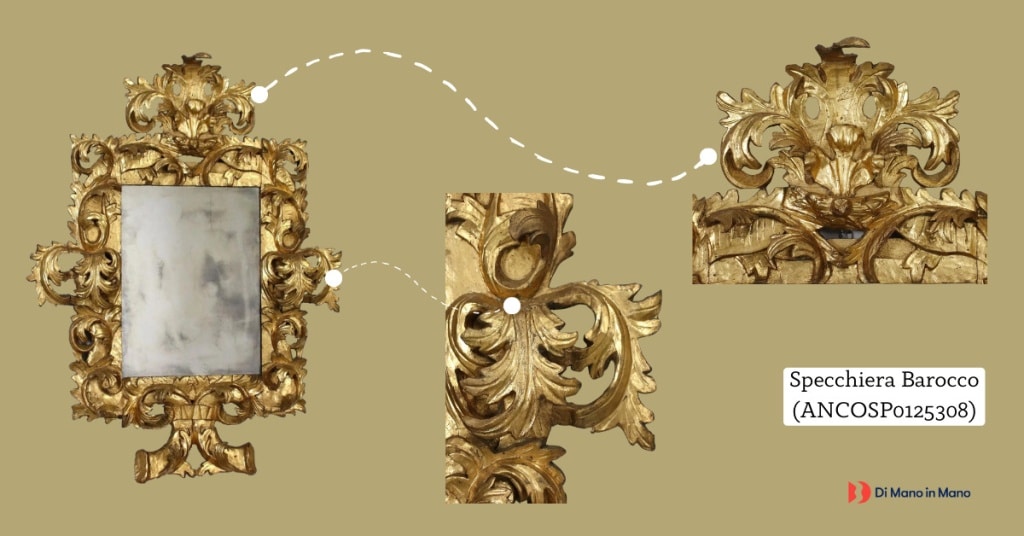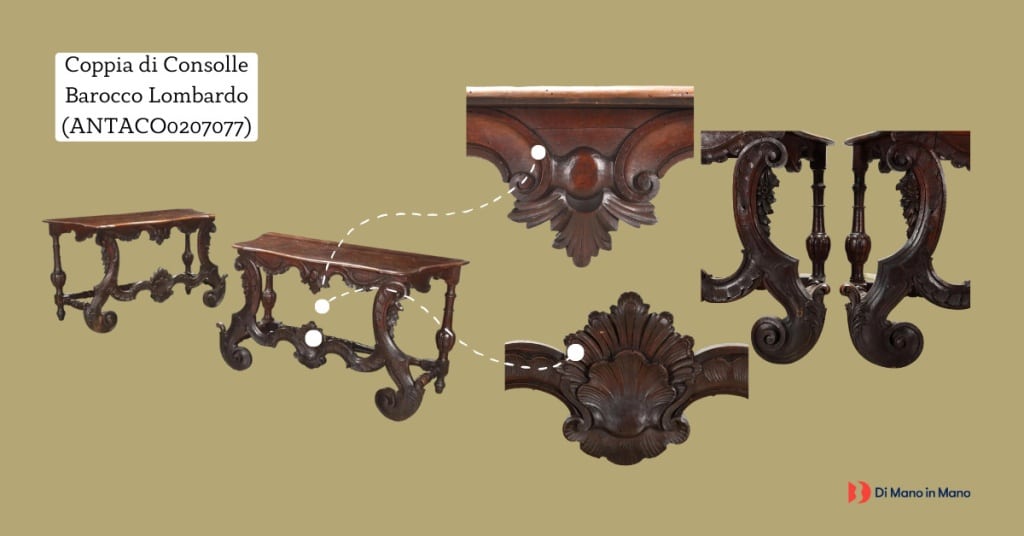
Today we will talk about a typical ornamental motif that characterizes the Baroque style and that adorned various types of furniture during the 17th century: the carved spiral motif.
The Baroque Style
The main purpose of the Baroque style is to astonish the viewer, evoke wonder, and create monumental, theatrical environments.
The Baroque originated in Rome under the leadership of the great sculptor Lorenzo Bernini. In the decorative arts, it developed by attempting to harmonize architectural forms with sculpture, depicting natural elements such as shells and leaves, or animals, and human or mythological figures.
While in architecture various elements such as marbles and bronzes were used, furniture aimed to achieve luminous effects through shadow play created by sculpture or light highlights achieved through gilding.
In Rome, the sculptural dimension would dominate even in furniture. Architectural elements such as shelves or capitals were assembled in opposition and lightened with the presence of carved spirals.
Lombard Baroque Carving
Giovan Andrea Fantoni is the Bergamasque carver who influenced Baroque taste in Lombardy. His encounter with Bernini did not completely shape his work, which retained regional characteristics.
While in Rome the sculptural dimension dominated, in Lombardy, the three-dimensional aspect was less pronounced, often remaining limited to decorating the front of furniture. These were mainly spirals wrapped in carved leaves, often losing the architectural dimension in favor of a lighter line. Lombard carving, moreover, was not as fond of gilding as in Roman examples, favoring lacquering and walnut finished with wax.
Examples from Our Catalog
A first example of Baroque carving is a Lombard mirror from the late 17th century, characterized by pierced carving representing abundant leaf scrolls, entirely gilded.

We also offer a group of seats dating from the first quarter of the 18th century, where you can notice the green lacquer of the two-dimensional carving on the crossbar and front legs, featuring intertwined acanthus leaves typical of the Fantonian style.

In this case, the seats and backs are made of stamped leather and partially gilded.
A third and final example is a pair of Lombard consoles dating from the early 18th century, characterized by walnut carving decoration without lacquer or gilding, resembling that of the previously mentioned seat group.

The decorative design on the front and uprights is well defined, composed of reserves, shell-like leafy elements, and small garlands with a flower in the center. The entire decoration is, once again, only present on the front of the tables.







